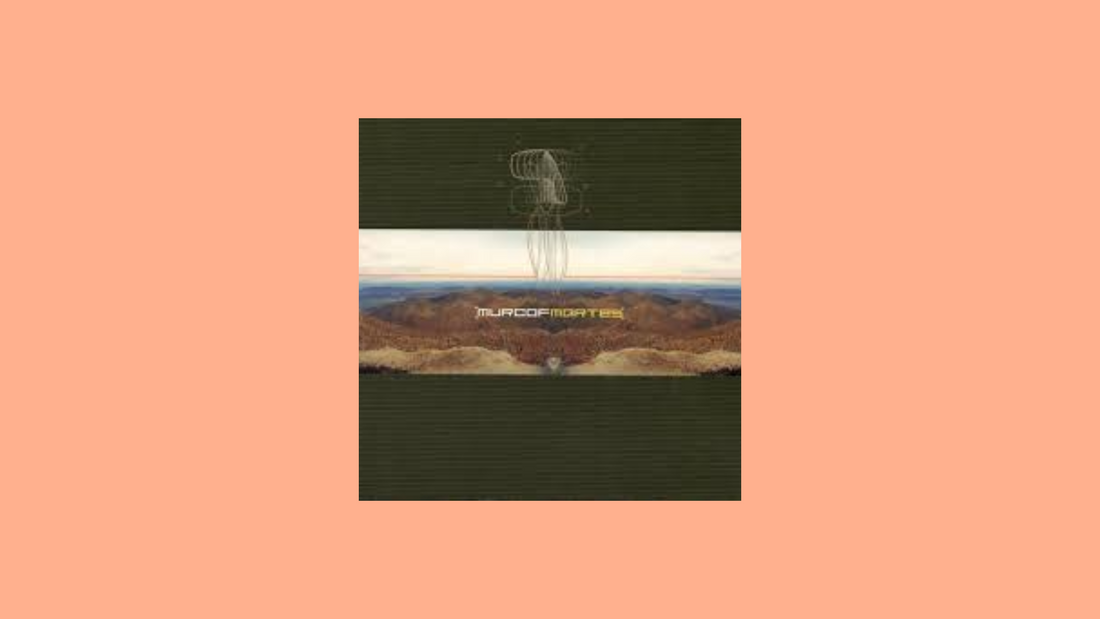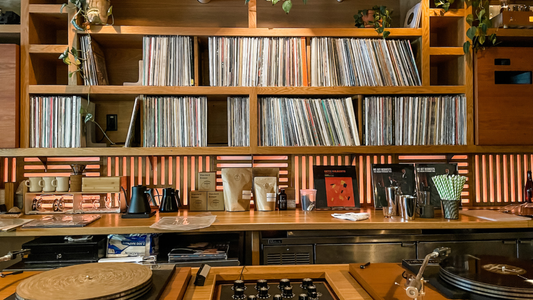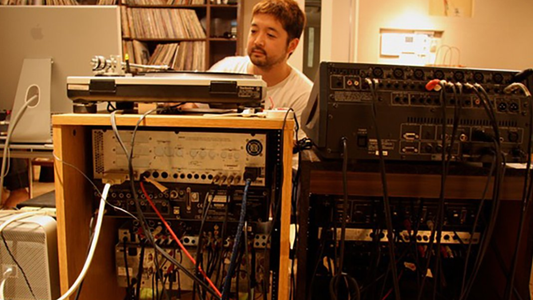
Murcof – Martes (2002)
By Rafi Mercer
The first sounds are faint, almost hesitant: a thin pulse, fragments of piano, the ghost of strings. Then the bass drops — heavy, deliberate, almost funereal — anchoring the air with gravity. Over it, classical textures drift in and out, chopped into fragments, stretched into drones. This is Martes, the debut album by Fernando Corona, released under the name Murcof in 2002. It remains one of the most striking works of early twenty-first-century electronic music, a record that married minimal techno with modern classical composition, creating a sound both intimate and monumental.
Corona grew up in Tijuana, on the borderlands of Mexico, and that sense of liminality permeates his work. Neither fully electronic nor fully acoustic, neither dancefloor nor concert hall, Martes inhabits the in-between. It was released on The Leaf Label, and while critics at the time grasped for terms like “microhouse” or “minimal,” the truth is that Murcof was carving out a new space. He drew on samples of Arvo Pärt, Henryk Górecki, and other modernist composers, layering them over sparse electronic beats. The effect was stark but never sterile — a kind of digital sacred music.
The album opens with “Memoria,” where sombre strings rise slowly against a deep, dub-like bass pulse. It is mournful, expansive, as if scored for a cathedral built of concrete and light. “Maiz” follows with a more insistent rhythm, but the texture remains austere: every sound chosen with precision, every silence resonant. “Mo” pares things down further, a skeletal beat beneath a hovering drone.
“Mes” is one of the record’s highlights. A slow, steady rhythm underpins string fragments that repeat like incantation. The track builds not through layering but through patience: each repetition accumulates weight until the piece feels monumental. “Mir” introduces a slightly brighter tone, piano chords flickering against the darkness. “Maestro” and “Marmol” continue the trajectory, each track unfolding like an architectural study — angles, shadows, resonance. The closing “Muerte” is devastating: a meditation on death, its strings aching against an implacable electronic throb. It feels less like a track than a requiem.
What makes Martes so extraordinary is its discipline. Corona refuses excess. Every beat, every chord, every drone is stripped to essence. Yet within that austerity lies immense emotion. The strings carry sorrow, the bass carries inevitability, the spaces between sounds carry weight. It is music that demands patience, but rewards it with depth.
Culturally, the album was significant in demonstrating the potential of electronic music to engage with the language of classical modernism. While many electronic producers sampled funk or soul, Murcof drew from Pärt’s tintinnabuli, Górecki’s lamentations, Ligeti’s atmospheres. In doing so, he reframed electronic minimalism as something not only functional but sacred. Martes became a touchstone for those exploring the border between club and concert hall, machine and prayer.
Listening today, the record remains potent. Its textures have not dated; if anything, they feel even more resonant in an age of saturation. Against the constant noise of contemporary culture, Martes offers space — austere, meditative, enveloping. It is not music of distraction but of attention. It asks you to slow down, to inhabit silence as much as sound.
For listeners new to this world, Martes is surprisingly welcoming. Its rhythms are steady, its melodies clear, its atmosphere immersive. You do not need to understand Pärt or minimal techno to feel it. It speaks directly, without ornament. Its inclusivity lies in its sincerity: no bravado, no spectacle, only sound arranged with devotion. For women and men alike, for young or seasoned ears, it offers not exclusion but invitation.
On vinyl, the depth of the bass becomes almost physical. The strings hover in the air, the beats pulse through the floor. The crackle of the pressing blends seamlessly with the drones, as if the record were meant to breathe with imperfection. The artwork — stark, monochrome — mirrors the music’s austerity. This is not casual listening. It is ceremony.
What endures about Martes is its ability to hold opposites: electronic and acoustic, austere and emotional, minimal and monumental. It is music of borderlands, of thresholds, of in-between spaces. It shows that even the most reduced palette can carry immense depth, that slow listening can uncover worlds within a single bass pulse, a single chord.
To play Martes is to enter that world — shadowed, resonant, patient. It is not a place of spectacle, but of reflection. It is music that carves out a chamber in time, holds you there, and teaches you that less can be infinite.
Rafi Mercer writes about the spaces where music matters. For more stories from Tracks & Tales, subscribe, or click here to read more.







